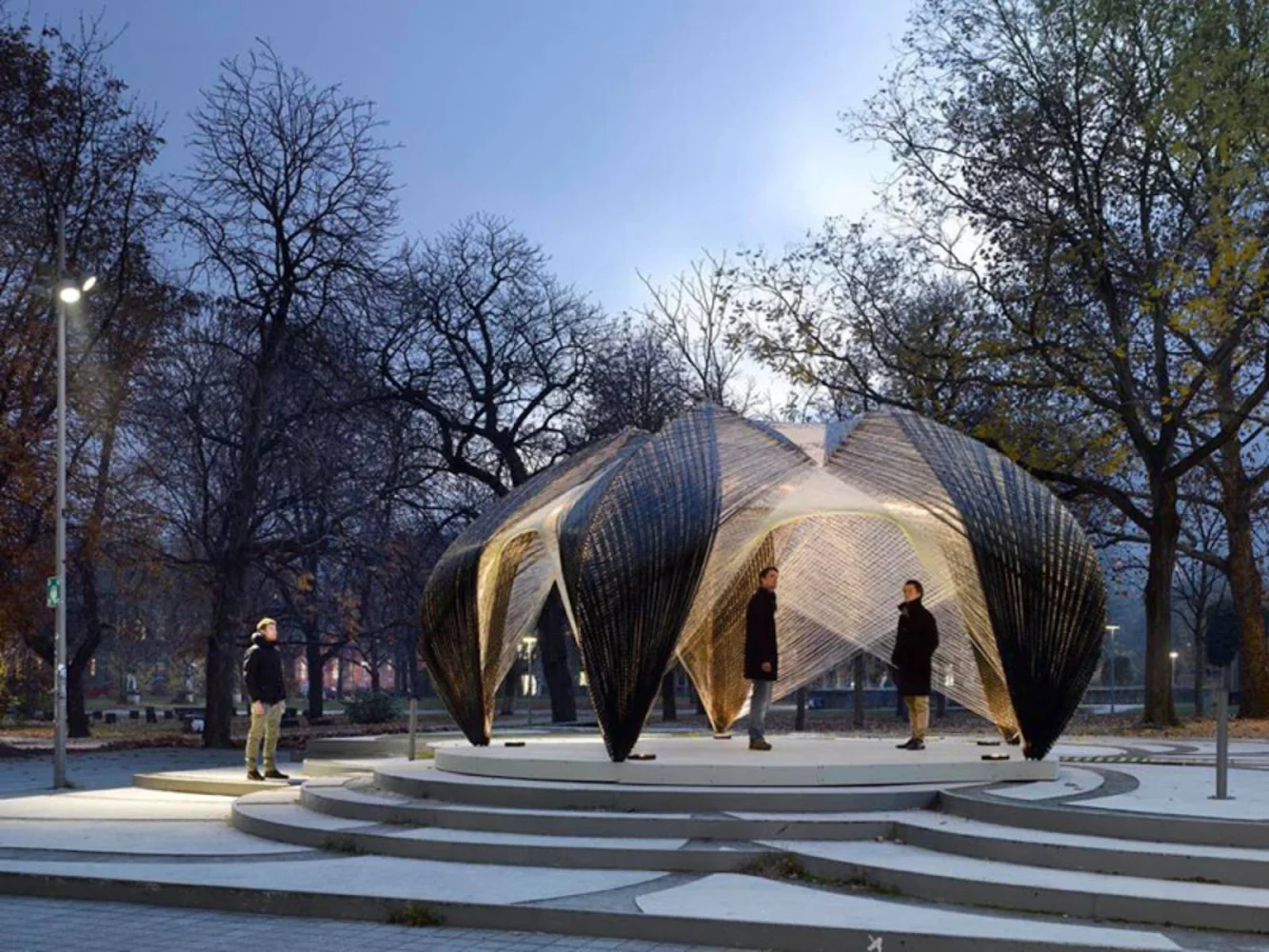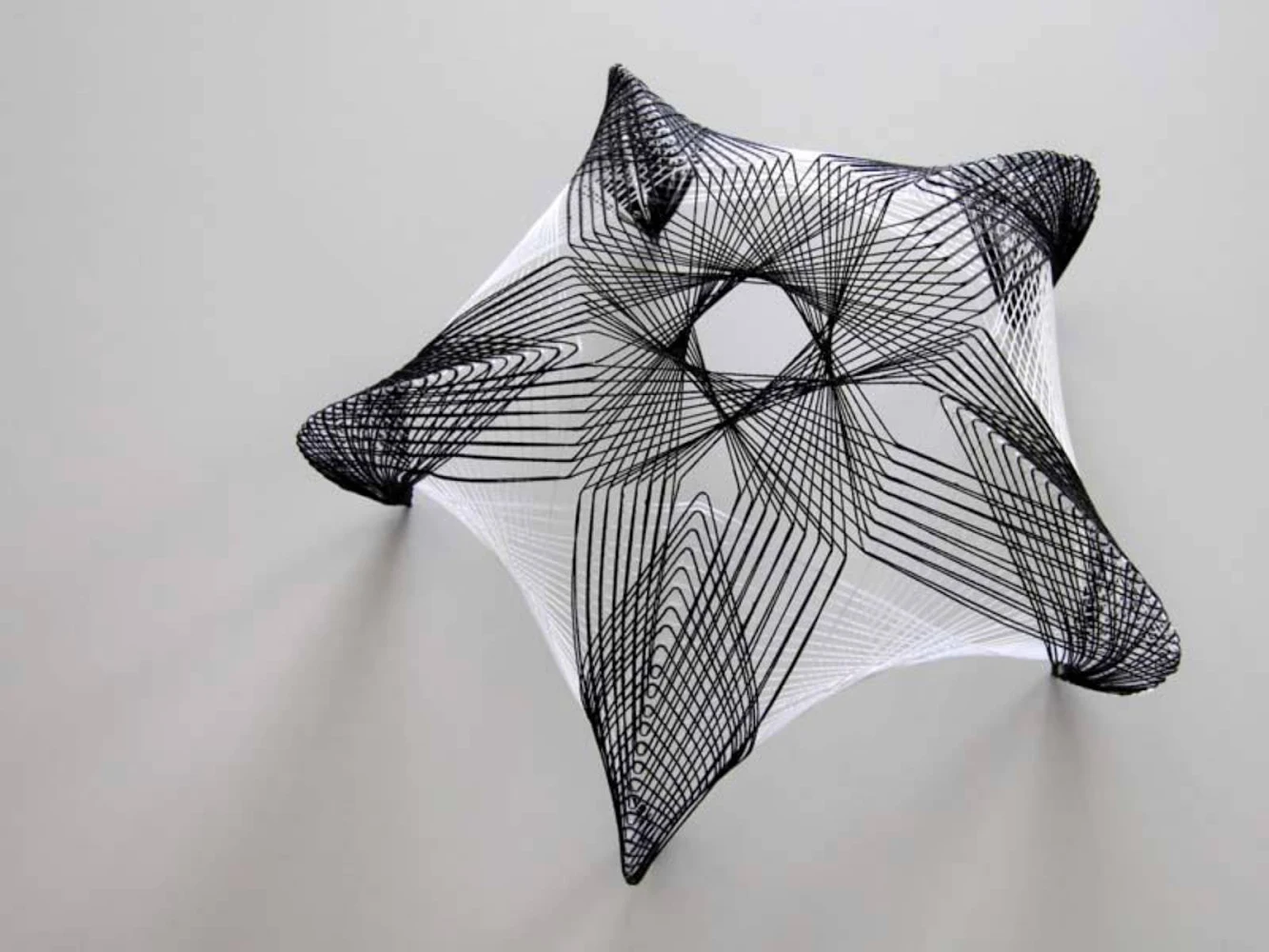
In November 2012 the Institute for Computational Design (ICD) and the Institute of Building Structures and Structural Design (ITKE) at the University of Stuttgart have completed a research pavilion that is entirely robotically fabricated from carbon and glass fibre composites.

At the core of the project is the development of an innovative robotic fabrication process within the context of the building industry based on filament winding of carbon and glass fibres and the related computational design tools and simulation methods.

Biological Model Following a “bottom-up” approach, a wide range of different subtypes of invertebrates were initially investigated in regards to the material anisotropy and functional morphology of arthropods. the observed biological principles were analysed and abstracted in order to be subsequently transferred into viable design principles for architectural applications.

Transfer of Biomimetic Design Principles the high efficiency and functional variation of the cuticle is due to a specific combination of exoskeletal form, fibre orientation and matrix. These principles were applied to the design of a robotically fabricated shell structure based on a fibre composite system in which the resin-saturated glass and carbon fibres were continuously laid by a robot, resulting in a compounded structure with custom fibre orientation.

Fibre optic sensors, which continuously monitor the stress and strain variations, were also integrated in the structure. the project’s concurrent consideration of shell geometry, fibre arrangement and fabrication process leads to a novel synthesis of form, material, structure and performance.

Computational Design And Robotic Production Form finding, material and structural design were directly integrated in the design process, whereby the complex interaction of form, material, structure and fabrication technology could be used as an integral aspect of the biomimetic design methodology.

The robotic fabrication of the research pavilion was performed on-site in a purpose-built, weatherproof manufacturing environment by a 6-axis robot coupled with an external seventh axis. Placed on a 2m high pedestal and reaching an overall working span and height of 4m, the robot placed the fibres on the temporary steel frame, which was actuated in a circular movement by the robotically controlled turntable. As part of the fabrication process the fibres were saturated with resin while running through a resin bath directly prior to the robotic placement.

This specific setup made it possible to achieve a structure of approximately 8.0m in diameter and 3.5m height by continuously winding more than 30 kilometres of fibre rovings. the parametric definition of the winding motion paths in relation to the digital geometry model, the robotic motion planning including mathematical coupling with the external axis, as well as the generation of robot control code itself could be implemented in a custom-developed design and manufacturing integrated environment.

After completion of the robotic filament winding process and the subsequent tempering of the fibre-resin composite, the temporary steel frame could be disassembled and removed. the remaining, extremely thin shell of just 4mm thickness constitutes an automatically fabricated, but locally differentiated structure.

Despite its considerable size and span, the semi-transparent skin of the pavilion weighs less than 320kg and reveals the system’s structural logic through the spatial arrangement of the carbon and glass fibres. the synthesis of novel modes of computational and material design, digital simulation and robotic fabrication allows both the exploration of a new repertoire of architectural possibilities and the development of extremely lightweight and materially efficient structures.


Location: Stuttgart, Germany Project: Inst. for ComputationalDesign (Prof. Menges), Inst. of Building Structures & Structural Design (Prof. Knippers) Concept Development: Jakob Weigele, Manuel Schloz System Development & Realization: Sarah Haase, Markus Mittner, Josephine Ross, Manuel Schloz, Jonas Unger, Simone Vielhuber, Franziska Weidemann, Jakob Weigele, Natthida Wiwatwicha with the support of Michael Preisack, Michael Tondera (Faculty of Architecture Workshop) Scientific Development & Project Management Riccardo La Magna (structural design), Steffen Reichert (detail design), Tobias Schwinn (robotic fabrication), Frédéric Waimer (fibre composite technology & structural design) Collaboration: University of Tuebingen, Departement of Evolutionary Biology of Invertebrates – Prof. Oliver Betz, Departement of Palaeontology of Invertebrates – Prof. James Nebelsick, Itv Denkendorf – Dr.-Ing. Markus Milwich Funding: Kuka Roboter GmbH, Competence Network Biomimetics, Sgl Group Momentive Photographs: Roland Halbe